Laboratory Products
Proliferation of HepG2 cells on BRANDplates® cellGrade™ plus surface
Jul 31 2018
For each experiment HepG2 cells were seeded at a density of 6000 cells/cm2 in wells of transparent 96-well F-bottom BRANDplates® and cultivated in DMEM medium containing 7% FCS at 37°C, 95% relative humidity and 5% CO2.
See Figure A
Metabolic activity measured by resazurin-resafurin turn over is used for relative quantification of cell numbers after 2 and 3 days post seeding. HepG2 cells were incubated in presence of 50 μM resazurin for 3 hours prior to fluorescence measurement (Ex 506 nm/Em 635 nm) in a plate reader (GeminiEM Molecular Devices). HepG2 cells cultivated on BRANDplates® cellGrade™ plus show higher fluorescence signals indicating higher cell numbers after 2 and 3 days in vitro (DIV) when compared to non-treated microplates (PS). Resafurin fluorescence measured in cell-free wells was used for background correction. Data represent mean and standard deviation of 8 measurements.
See Figure B
Representative images of HepG2 cells cultivated on non treated (PS) and cellGrade™ plus treated microplates at corresponding time points (200 x magnification).
Conclusion
BRANDplates® with cellGrade™ plus surface perfectly support attachment and proliferation of HepG2 cells.
Please click here for our BRANDplates® Selection Guide and further application notes.
Digital Edition
Lab Asia 31.2 April 2024
April 2024
In This Edition Chromatography Articles - Approaches to troubleshooting an SPE method for the analysis of oligonucleotides (pt i) - High-precision liquid flow processes demand full fluidic c...
View all digital editions
Events
Apr 22 2024 Marrakech, Morroco
Making Pharmaceuticals Exhibition & Conference
Apr 23 2024 Coventry, UK
Apr 23 2024 Kintex, South Korea
Apr 23 2024 Seoul, South Korea
Apr 24 2024 Jakarta, Indonesia
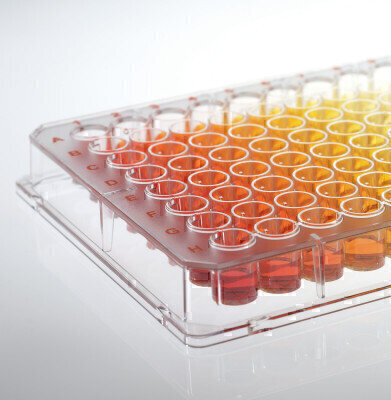
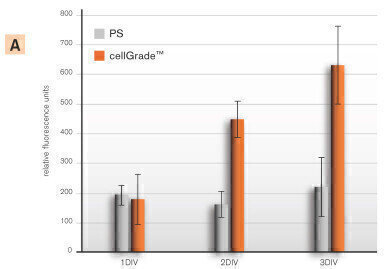
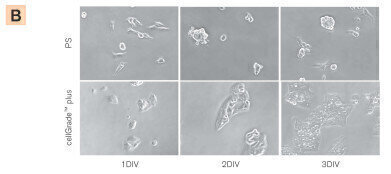
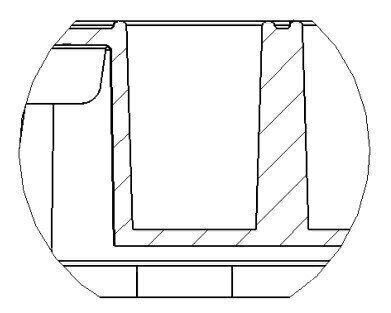
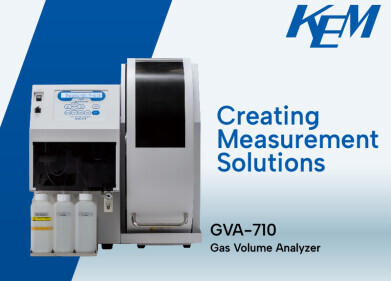
.jpg)

.jpg)













